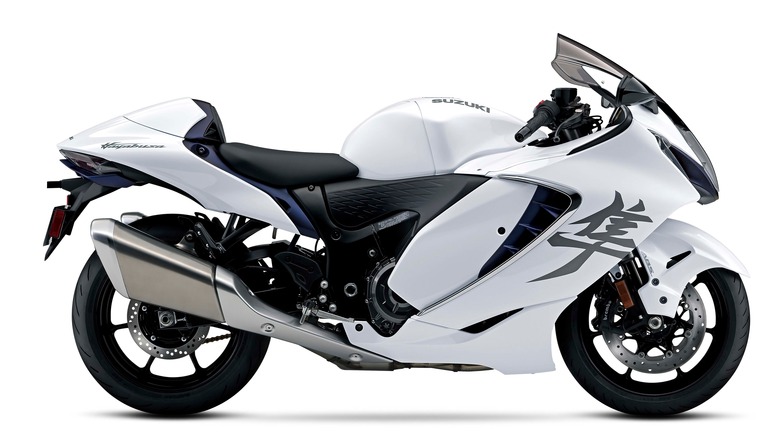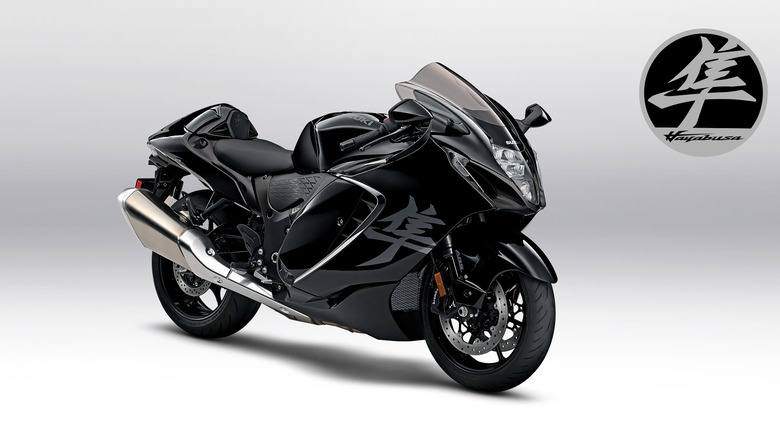Everything You Need To Know About Suzuki Hayabusa Motorcycle Engines
When Suzuki introduced the Hayabusa in 1999, its speed and agility made it an instant force to be reckoned with in the sports bike segment. Hayabusa is the Japanese name for the peregrine falcon and was a salvo in Suzuki's battle with Honda over which company could build the fastest bike. Suzuki won the war of words and the speed competition; the Hayabusa outpaced the Honda Blackbird with a 194 mph run in 1999. Honda must not have known that the peregrine falcon preys on blackbirds.
The first generation Hayabusa was driven by a 1,298cc four-cylinder engine. Cycle World's Mark Hoyer recently recalled testing that first Hayabusa a quarter century ago. He noted the sub-10 second quarter mile time and added that the Hayabusa "also did 194 mph for the old CW Stalker radar gun, which we are going to bronze and hang on the wall in our office because no bike that gun has recorded before or since will ever go so fast. Yes, the 'Busa remains the fastest production top speed we have ever recorded."
The Hayabusa got a major update in 2008, a mid-cycle refresh in 2013, and another substantial update for the 2022 model year. Suzuki upgraded the engine to a 1,340cc four-cylinder when the second generation debuted in 2008 and has kept that powerplant under the Hayabusa's seat ever since.
The new Hayabusa engine is lighter and more powerful than the original
The newer engine has an 81mm bore, 65mm stroke, and a compression ratio of 12.5:1. Each cylinder has its own dual-injector electronically governed throttle body for precise fuel delivery and aluminum alloy pistons and titanium valves to reduce weight. The connecting rods have been lightened by three grams each as well.
The air intake passages in the fairing were also reconfigured, funneling more cooling air to the engine while the bike is in motion. The exhaust system on the newer engine is 4.5 pounds lighter than the old version while also being better at filtering out harmful greenhouse gases. Suzuki extended the air intake pathway by 12mm to make the Hayabusa stronger at low RPMs.
The newer engine produces 187 horsepower and 100 lb-ft of torque (up from the original motor's 175 hp and 102 lb-ft). Zach Court of Revzilla test rode a 2023 model and wrote that the engine "has always been the crown jewel of the Hayabusa, and even saddled with all of the emissions hardware and rider aids that are requisite on bikes today, the powerplant is stellar. It mumbles a gentle baritone at idle, and it's truly as polite as any engine could be at low speed."

